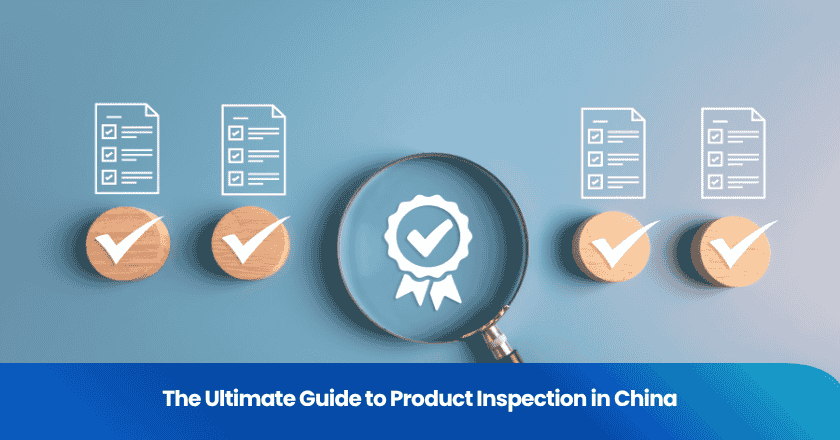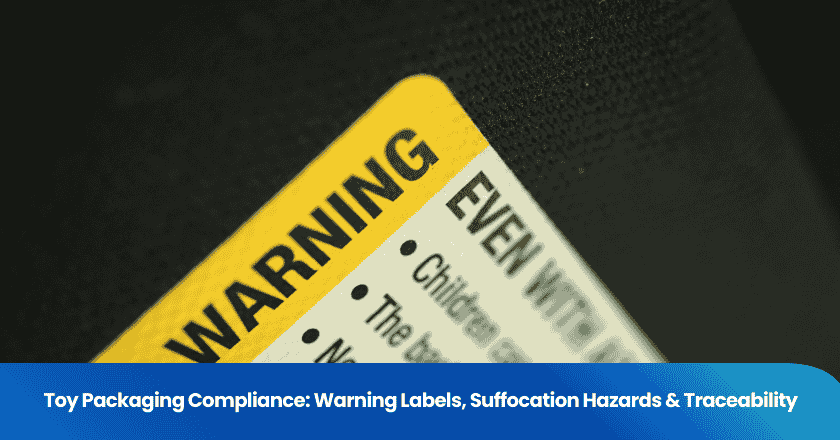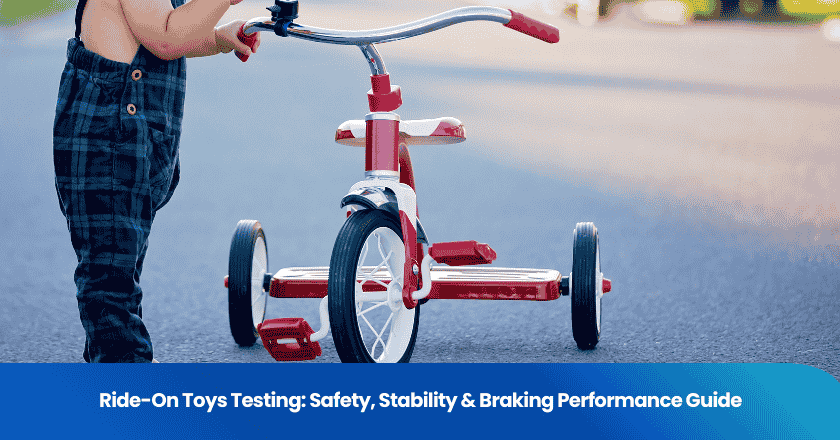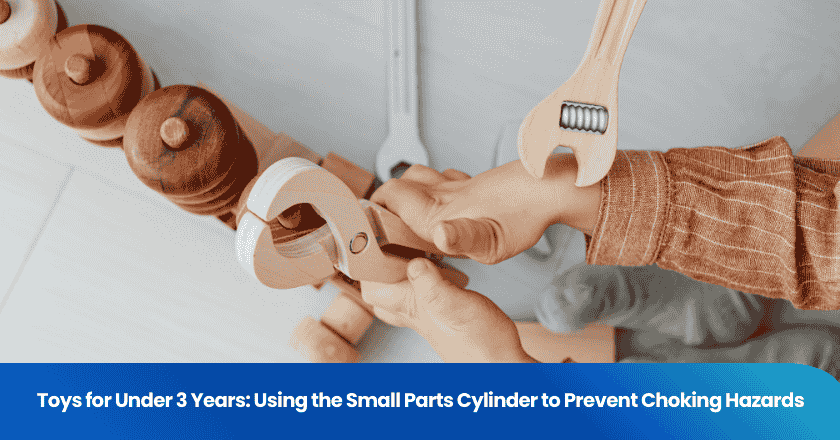
Product inspection China stands as a crucial step for anyone importing goods from china. Without a solid quality control process, businesses risk receiving products that fail to meet safety standards or customer expectations. Skipping inspections often leads to costly delays, defective shipments, and compliance issues. Effective quality control protects investments and ensures that goods arrive as specified, supporting a reliable supply chain.
Why Product Inspection China Is Essential
Protecting Your Investment
Importers rely on product inspection china to safeguard their financial interests. Every shipment represents a significant investment. Without a thorough quality inspection, buyers risk receiving goods that do not match their requirements. Inspectors verify product specifications, workmanship, and consistency before shipment. This process helps prevent costly returns or rework. Many companies use product inspection china as a standard practice to ensure that their capital remains protected throughout the supply chain.
Tip: Schedule a quality inspection when production reaches 80-100% completion. This timing allows inspectors to review finished goods and identify issues before shipping.
Ensuring Compliance
Meeting regulatory standards is a top priority for any importer. Product inspection china plays a vital role in confirming that goods comply with both local and international regulations. Inspectors check for proper labeling, safety features, and documentation. They also verify that products meet the required regulatory standards for the destination market. By conducting a quality inspection, importers avoid legal complications and potential customs delays.
• Inspectors review:
◦ Product certifications
◦ Safety markings
◦ Packaging requirements
Reducing Risks
Product inspection china reduces the risk of receiving defective or non-compliant goods. Early detection of problems helps importers address issues before products leave the factory. Quality inspection teams use random sampling and testing to catch hidden defects. This proactive approach minimizes the chance of customer complaints and protects brand reputation. Importers who invest in product inspection china experience fewer disruptions and greater confidence in their supply chain.
Understanding Pre-shipment Inspections
What Is a Pre-shipment Inspection?
A pre-shipment inspection serves as a systematic evaluation of goods before they leave the factory. Inspectors visit the production site when manufacturing reaches 80-100% completion. They use a detailed checklist to examine product quality, quantity, and compliance with specifications. The process includes random sampling, physical testing, and verification of packaging and labeling. Pre-shipment inspections help importers confirm that products meet contractual requirements and regulatory standards.
Inspectors follow a structured approach:
1. Review production status and readiness.
2. Select samples using statistical methods.
3. Conduct visual and functional tests.
4. Check packaging integrity and labeling accuracy.
5. Document findings in a comprehensive report.
Note: Pre-shipment inspection provides objective data that supports informed shipping decisions.
Key Benefits for Importers
Pre-shipment inspections offer several advantages to importers. They reduce the risk of receiving defective or non-compliant goods. Importers gain confidence in product quality and consistency. The process helps avoid costly returns, rework, and delays at customs. Pre-shipment inspection also ensures that goods match the agreed specifications and comply with destination market regulations.
Importers benefit from:
• Early detection of defects or inconsistencies.
• Verification of product quantity and packaging.
• Assurance of compliance with safety and labeling standards.
• Detailed reporting for transparent communication with suppliers.
A pre-shipment inspection acts as a safeguard for every shipment. Importers who use pre-shipment inspections consistently experience fewer supply chain disruptions and improved customer satisfaction. The process supports long-term business growth by maintaining high standards and minimizing risks.
| Benefit | Description |
|---|---|
| Quality Assurance | Confirms product meets specifications |
| Compliance | Verifies regulatory and labeling requirements |
| Risk Reduction | Identifies defects before shipping |
| Cost Savings | Prevents returns and rework |
Types of Product Inspections in China
Pre-shipment Inspections
Pre-shipment inspections play a vital role in the quality control process for importers. Inspectors conduct pre-shipment inspections when production reaches 80-100% completion. They use a detailed checklist to verify product quality, quantity, and compliance with specifications. Pre-shipment inspections help importers confirm that goods meet contractual requirements before shipment. Inspectors select random samples and perform tests to identify defects or inconsistencies. Pre-shipment inspections also include packaging and labeling checks to ensure compliance with destination market standards. Importers rely on pre-shipment inspections to reduce the risk of receiving defective goods. Pre-shipment inspections provide objective data that supports informed shipping decisions. Many companies consider pre-shipment inspections a standard practice for every order.
Note: Pre-shipment inspections offer a final opportunity to catch issues before products leave the factory.
During Production Inspection
During production inspection occurs while manufacturing is still underway. Inspectors visit the factory to check the first completed units. They assess production processes, materials, and early-stage products. This inspection helps identify problems early, allowing suppliers to correct issues before full production continues. Importers use during production inspection to monitor progress and maintain consistent quality.
Initial Production Check
Initial production check takes place at the very start of manufacturing. Inspectors review raw materials, components, and the first items off the production line. This step ensures that suppliers use the correct materials and follow agreed specifications. Early detection of problems at this stage prevents costly mistakes later in the process.
Container Loading Inspection
Container loading inspection happens as goods are loaded for shipment. Inspectors verify that products match the order and that packaging protects items during transit. They also check container conditions and loading methods. This inspection reduces the risk of damage or loss during shipping and ensures that the correct quantity leaves the factory.
Pre-shipment Inspection Procedure
A successful pre-shipment inspection procedure ensures that importers receive products that meet their expectations. This process involves several critical steps, each designed to strengthen quality control and minimize risks.
Scheduling the Inspection
Importers initiate the inspection by booking with a third-party agency or their own team. They select a date when production reaches 80-100% completion. This timing allows inspectors to review finished goods and catch any last-minute issues. Clear communication with the factory helps avoid delays and ensures that the inspection team has access to the necessary areas and documents.
Tip: Always confirm the inspection date with the supplier and provide a detailed checklist. This step supports effective quality control and prevents misunderstandings.
On-site Inspection Steps
Inspectors arrive at the factory and introduce themselves to the production manager. They review the production status and verify that the goods are ready for inspection. The team uses a checklist tailored to the product type and client requirements. Inspectors observe the manufacturing environment, assess storage conditions, and check for any obvious defects. They document their findings throughout the visit.
Typical On-site Steps:
1. Meet with factory representatives.
2. Review production completion.
3. Confirm product quantity.
4. Examine storage and handling practices.
5. Begin sampling and testing.
Sampling and Testing
Sampling forms the backbone of quality control during the inspection. Inspectors select random units using statistical methods to ensure unbiased results. They perform visual checks for appearance, measure dimensions, and test functionality. Special tests may include durability assessments, safety checks, or performance evaluations. Inspectors record all results and compare them against the agreed specifications.
| Sampling Method | Purpose | Benefit |
|---|---|---|
| Random Sampling | Unbiased defect detection | Reliable quality data |
| Statistical | Consistency verification | Accurate reporting |
Note: Effective sampling and testing help importers identify hidden defects and maintain high standards of quality control.
Packaging and Labeling Checks
Inspectors examine packaging materials for durability and suitability. They verify that labels contain accurate information, including product details, safety warnings, and compliance marks. Proper packaging protects goods during transit and ensures that products meet destination market requirements. Inspectors also check for correct barcodes, batch numbers, and carton markings.
• Inspectors look for:
◦ Secure packaging
◦ Accurate labeling
◦ Compliance with regulations
Quality control at this stage prevents damage and delays during shipping.
Final Reporting
After completing all inspection steps, the team compiles a comprehensive report. This document includes photos, test results, and notes on any defects or non-compliance issues. The report provides a clear summary of the inspection findings and recommendations for next steps. Importers use this report to make informed decisions about accepting, rejecting, or requesting rework on the shipment.
Alert: A detailed final report supports transparent communication and strengthens quality control throughout the supply chain.
The pre-shipment inspection procedure offers a structured approach to verifying product quality, compliance, and readiness for shipment. Importers who follow these steps consistently achieve better outcomes and protect their investments.
What Pre-shipment Inspection Services Cover
Functionality and Performance
Pre-shipment inspection services evaluate whether products operate as intended. Inspectors test each item to confirm that it performs according to the agreed specifications. They use functional tests to check switches, buttons, and electronic features. The team assesses mechanical parts for smooth operation. Quality control teams document any failures or inconsistencies. They compare results against the client’s requirements. This process ensures quality assurance and reduces the risk of customer complaints.
Tip: Importers should request specific performance tests for complex products. This step strengthens quality control and supports long-term business success.
Durability and Appearance
Inspectors examine products for durability and visual appeal. They check materials for strength and resistance to wear. The team inspects surfaces for scratches, dents, or discoloration. Quality control experts use drop tests and stress tests to measure product resilience. They review finishing details, such as paint, stitching, and assembly. Consistent appearance across all units signals strong quality assurance. Importers rely on these checks to maintain brand reputation and meet market expectations.
Durability and Appearance Checklist:
• Material strength
• Surface finish
• Color consistency
• Assembly quality
• Resistance to damage
Dimensions and Specifications
Quality inspection teams measure products to verify dimensions and specifications. They use calipers, rulers, and gauges for precise measurements. Inspectors compare actual sizes to technical drawings and order details. Any deviation from the required specifications triggers further review. Quality control at this stage prevents shipment of non-compliant goods. Importers receive detailed measurement reports that support transparent communication with suppliers.
| Specification | Measurement Tool | Quality Control Action |
|---|---|---|
| Length | Ruler | Compare to order |
| Width | Caliper | Document deviation |
| Weight | Scale | Verify consistency |
Compliance and Documentation
Pre-shipment inspection services include thorough checks for compliance and documentation. Inspectors review product labels, safety markings, and certifications. They verify that goods meet local and international regulations. The team examines shipping documents, test reports, and certificates of conformity. Quality control experts ensure that all paperwork matches the shipment. Proper documentation supports smooth customs clearance and reduces the risk of delays.
Alert: Missing or incorrect documentation can lead to shipment rejection. Importers should prioritize quality control in compliance checks to avoid costly issues.
Pre-shipment inspection services provide a comprehensive approach to quality control. They cover functionality, durability, dimensions, and compliance. Importers who invest in these services achieve higher levels of quality assurance and protect their supply chain from unexpected risks.
Choosing Pre-shipment Inspection Services
Third-party vs. In-house Inspections
Importers face a key decision between third-party inspection and in-house inspection. Third-party inspection companies offer independent quality control. These companies send trained inspectors to the factory. They follow strict procedures and provide unbiased reports. In-house inspection teams work directly for the importer or supplier. They may have deep product knowledge but can lack objectivity. Third-party inspection provides a higher level of transparency and helps maintain consistent quality control across different suppliers. Many importers choose third-party inspection to avoid conflicts of interest and to ensure reliable quality assurance.
Tip: Third-party inspection companies often use international standards for quality control, which supports global trade requirements.
Selecting a Reliable Partner
Choosing the right partner for quality control is critical. Importers should evaluate third-party inspection companies based on experience, reputation, and service coverage. A reliable provider demonstrates strong communication skills and delivers detailed inspection reports. They must understand the importer’s product and market requirements. Importers should request sample reports and check references before making a decision. A good partner helps streamline quality control and reduces the risk of shipment delays or non-compliance.
Checklist for Selecting a Partner:
• Proven track record in quality control
• Clear reporting process
• Responsive customer support
• Knowledge of relevant regulations
Inspection Costs and Fees
Inspection costs vary depending on the type of service, product complexity, and location. Third-party inspection companies usually charge per man-day or per inspection. Some offer package deals for regular clients. Importers should compare fees and understand what each service includes. Transparent pricing helps avoid hidden charges. Investing in quality control saves money in the long run by preventing costly returns and protecting brand reputation. Quality control remains a necessary expense for any importer who values consistent product standards.
Service Type
| Service Type | Typical Fee Structure | Included Services |
|---|---|---|
| Third-party inspection | Per man-day/inspection | On-site checks, reporting |
| In-house inspection | Salaries/overhead | Internal quality control |
Note: Effective quality control ensures every shipment meets expectations and supports long-term business growth.
Common Mistakes to Avoid
Incomplete Inspection Criteria
Many importers make the mistake of providing vague or incomplete inspection criteria. When the inspection checklist lacks detail, inspectors may overlook important product features or quality standards. This oversight can result in missed defects or non-compliance with regulations. Importers should always create a comprehensive checklist that covers every aspect of the product, including appearance, dimensions, functionality, packaging, and labeling.
Tip: Importers should review product specifications and regulatory requirements before finalizing the inspection checklist. A detailed checklist ensures inspectors know exactly what to verify.
A well-prepared checklist supports clear communication between all parties. It also helps inspectors focus on the most critical areas during the inspection.
Relying Only on Supplier Assurances
Some importers trust supplier assurances without independent verification. Suppliers may promise that products meet all requirements, but without a third-party inspection, there is no objective proof. Relying solely on supplier statements increases the risk of receiving defective or non-compliant goods.
• Third-party inspections provide unbiased results.
• Independent reports help importers make informed decisions.
• Objective data supports claims in case of disputes.
Importers who use only supplier assurances often face unexpected issues after shipment. They may encounter costly returns, customer complaints, or regulatory penalties.
Ignoring Re-inspection Responsibilities
After an initial inspection reveals defects or non-compliance, some importers neglect to arrange a re-inspection. Skipping this step can lead to unresolved issues reaching the end customer. Re-inspection confirms that the supplier has corrected all problems and that the shipment now meets the required standards.
| Step | Purpose |
|---|---|
| Initial Inspection | Identify defects or issues |
| Corrective Action | Supplier fixes problems |
| Re-inspection | Verify all corrections |
Alert: Importers should always schedule a re-inspection if the first report highlights any major issues. This practice protects the supply chain and maintains product quality.
By avoiding these common mistakes, importers strengthen their quality control process and reduce the risk of costly errors.
Tips for Successful Product Inspection China
Customizing Your Checklist
A tailored checklist forms the backbone of effective quality control. Each product has unique features and requirements. Inspectors need a checklist that matches the specific product, industry standards, and destination market regulations. They should include points for appearance, dimensions, performance, packaging, and labeling. A detailed checklist helps inspectors focus on critical areas and reduces the risk of missing important defects. Importers who invest time in customizing their checklist see better results from pre-shipment inspections.
Tip: Review previous inspection reports and customer feedback when updating the checklist. This approach strengthens quality control and addresses recurring issues.
Clear Communication with Suppliers
Clear communication supports strong quality control throughout the inspection process. Importers should share their expectations and inspection criteria with suppliers before production begins. They need to confirm that the supplier understands the requirements and agrees to cooperate during inspections. Regular updates between all parties help prevent misunderstandings and delays. When everyone stays informed, the inspection process runs smoothly and efficiently.
Checklist for Effective Communication:
• Share inspection checklist early
• Confirm supplier understanding
• Schedule inspection dates in advance
• Provide feedback after each inspection
Handling Defects and Non-compliance
Defects and non-compliance can occur even with strict quality control. Inspectors must document all issues clearly, using photos and detailed notes. Importers should review the inspection report and decide on corrective actions. They may request rework, replacement, or a re-inspection. Quick responses to defects protect the supply chain and maintain product standards. Consistent follow-up ensures that suppliers address problems before shipment.
| Step | Action Required |
|---|---|
| Identify Defects | Document and report |
| Decide on Action | Request correction |
| Verify Correction | Arrange re-inspection |
Note: Strong quality control relies on prompt action and thorough documentation when handling defects.
Importers recognize that thorough product inspection in China protects their investments and ensures product standards. They make pre-shipment inspections a routine part of sourcing to strengthen quality control. Selecting reliable inspection services and avoiding common mistakes supports consistent quality control.
• Take proactive steps to choose the right partner.
• Review inspection reports for effective quality control.
Prioritize quality control to achieve successful importing and build a dependable supply chain.
FAQ
What is the best time to schedule a product inspection in China?
Inspectors recommend scheduling when production reaches 80-100% completion. This timing allows them to review finished goods and identify any issues before shipment. Importers gain the most value from inspections at this stage.
How long does a typical pre-shipment inspection take?
Most inspections require one full working day at the factory. The duration depends on product complexity and order size. Inspectors may need additional time for large shipments or specialized testing.
Can importers customize the inspection checklist?
Importers can provide a detailed checklist tailored to their product requirements. Inspectors follow these guidelines to verify specific features, dimensions, and compliance standards. Custom checklists improve inspection accuracy.
Tip: Importers should update their checklist regularly to reflect changing regulations and customer feedback.
What happens if inspectors find defects during the inspection?
Inspectors document all defects in the final report. Importers review the findings and decide on corrective actions. They may request rework, replacement, or a re-inspection to ensure the shipment meets quality standards.
Grow your business with TradeAider Service
Click the button below to directly enter the TradeAider Service System. The simple steps from booking and payment to receiving reports are easy to operate.



